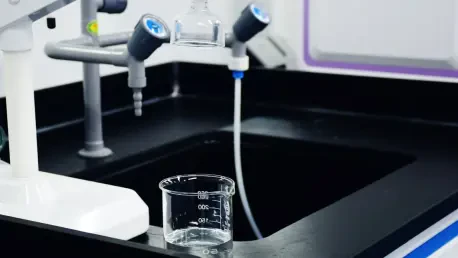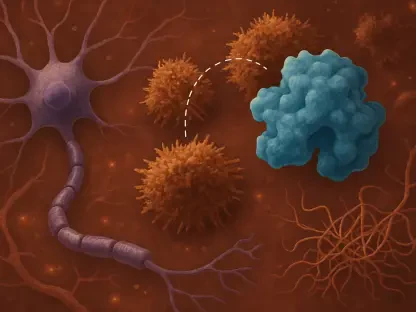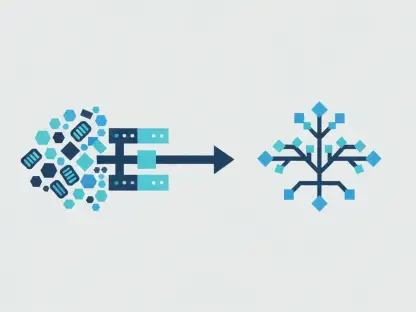In the ongoing battle against water contamination, few pollutants have proven as tenacious as per- and polyfluoroalkyl substances (PFAS), frequently dubbed “forever chemicals.” These resistant compounds are omnipresent in various products, including food packaging and nonstick coatings, posing environmental and health risks due to their persistence and difficulty to degrade. The traditional methods employed to remove PFAS from water systems, such as activated carbon, ion exchange resins, and reverse osmosis, have drawbacks including high operational costs and reduced efficacy. However, recent advancements by researchers at the University at Buffalo are offering promising solutions through the application of molecular nanocages.
Innovative Approach to Water Purification
Porphyrin-Based Chemical Nanocages
The latest breakthrough in PFAS water purification revolves around the development of porphyrin-based chemical nanocages. These organic nanoporous materials are designed specifically to trap and remove PFAS from water sources with greater efficiency. Porphyrins are a group of organic compounds that can form stable and robust structures, making them ideal for creating nanocages with high selectivity and water stability.
Researchers have demonstrated that these nanocages can remove approximately 80-90% of PFAS from both sewage and groundwater during experimental tests. This significant reduction indicates the effectiveness of the nanocages compared to traditional methods. The nanocages’ structure allows them to interact more effectively with PFAS molecules, enabling faster sorption and higher removal rates. This innovative approach provides a viable solution for significantly reducing the presence of these persistent chemicals in contaminated water sources.
Overcoming Traditional Limitations
Traditional PFAS removal techniques, such as activated carbon filtration, often struggle in the face of high-volume or heavily contaminated water sources. Activated carbon, for instance, tends to interact weakly with PFAS and is particularly ineffective in treating unprocessed sewage. This has led to the adoption of more cost-intensive and maintenance-heavy methods like ion exchange resins and reverse osmosis, which still fall short in terms of overall efficacy.
In contrast, porphyrin-based nanocages offer a robust alternative. Their high selectivity and interaction strength with PFAS molecules result in superior performance even under challenging conditions. The ability of these nanocages to chemically deactivate PFAS molecules further enhances their effectiveness, making them a more reliable and comprehensive solution for water treatment. Additionally, the scalability and modifiability of the nanocages make them suitable for widespread applications, from municipal water systems to industrial wastewater treatment, without compromising other water content integrity.
Practical Implications and Future Prospects
Scalability and Modifiability
One of the most promising aspects of the porphyrin-based nanocage technology is its scalability. The synthesis of these nanocages can be adjusted to accommodate different volumes and contamination levels, making it practical for various water purification applications. Additionally, the ability to modify the chemical structure of the nanocages allows for tailored solutions that can address specific contaminants beyond PFAS.
This level of customization is crucial for effective water treatment, as different environments present unique challenges. The modifiable nature of nanocages suggests that they could be adapted to target other hazardous substances, potentially revolutionizing the field of water remediation. This flexibility ensures that the technology remains relevant and effective against evolving contamination issues, making it a sustainable and forward-thinking solution for water purification.
Environmental and Health Benefits
The widespread adoption of nanocage technology for PFAS removal could have significant environmental and health benefits. Reducing the levels of these persistent chemicals in water sources would lead to cleaner ecosystems and safer drinking water. Long-term exposure to PFAS has been linked to various health issues, including cancer, liver damage, and immune system disruptions. By effectively removing these chemicals from water supplies, nanocages could play a crucial role in mitigating these health risks.
Furthermore, the low environmental impact of the nanocages themselves is a noteworthy advantage. Unlike some traditional methods that generate secondary pollutants or require frequent maintenance and replacement, the durability and high efficiency of nanocages minimize waste and resource consumption. This contributes to a more sustainable approach to water purification, aligning with broader goals of environmental conservation and public health protection.
A New Era in Water Purification
In the ongoing fight against water pollution, few contaminants have proven as stubborn as per- and polyfluoroalkyl substances (PFAS), commonly known as “forever chemicals.” These persistent compounds are found in a range of products, including food packaging and nonstick coatings, presenting significant environmental and health risks due to their durability and difficulty to break down. Traditional methods for removing PFAS from water systems, such as activated carbon, ion exchange resins, and reverse osmosis, face challenges like high operational costs and reduced efficiency. However, promising new developments by researchers at the University at Buffalo are addressing these issues using molecular nanocages. This innovative approach shows great potential in offering more effective and cost-efficient solutions for mitigating the impact of these “forever chemicals,” marking an important step forward in the ongoing effort to protect our water resources and public health.









